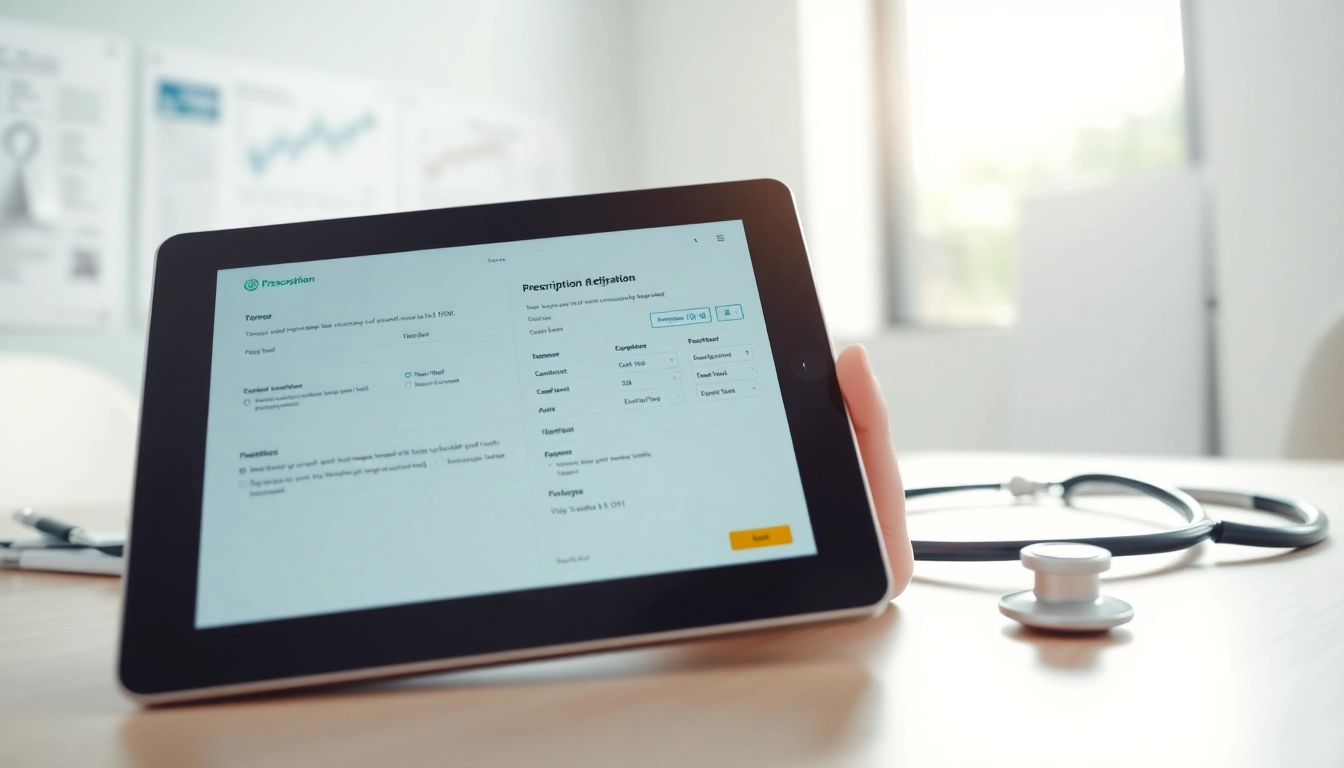Understanding Eprescription App Development
The healthcare industry is constantly evolving, and with the increased focus on digital transformation, eprescription app development has emerged as a crucial aspect of modern healthcare solutions. E-prescribing, or electronic prescribing, allows physicians to send prescriptions directly to pharmacies via digital platforms, enhancing the accuracy, efficiency, and safety of the prescribing process.
What is Eprescription?
Eprescription is the process of creating and transmitting prescription orders electronically. This system eliminates the need for paper prescriptions, reducing the chances of errors that can occur with handwritten prescriptions. By leveraging technology, e-prescribing systems streamline the workflow for healthcare providers and pharmacies, leading to improved patient care, compliance, and medication adherence.
History of Eprescribing Technology
The evolution of e-prescribing technology can be traced back to the early 1990s when it first began gaining traction in the United States. Initially designed to assist healthcare providers in managing prescriptions and medication records, e-prescribing systems have since developed into comprehensive platforms integrating with electronic health records (EHRs). Regulatory initiatives, institutional adoption, and advancements in technology have fueled the rapid transformation of e-prescribing, making it an essential part of modern healthcare practices.
Benefits of Eprescription App Development
The benefits of developing an e-prescription app are multifaceted. Key advantages include:
- Improved Accuracy: E-prescribing minimizes errors related to misinterpretations of handwritten prescriptions.
- Enhanced Patient Safety: By providing alerts for potential drug interactions or allergies, e-prescription systems improve patient safety.
- Increased Efficiency: The elimination of paper prescriptions speeds up the prescribing process, allowing healthcare providers to spend more time with patients.
- Cost Savings: E-prescribing can reduce operational costs for healthcare facilities by streamlining workflows and minimizing prescription errors.
- Improved Patient Engagement: Patients can be more involved in their medication management, fostering a better understanding of their health.
Key Features of Eprescription Applications
Essential Functionalities
When developing an e-prescription app, certain functionalities are vital to ensure effectiveness and usability:
- Prescription Management: Features should allow for easy creation, modification, and tracking of prescriptions.
- Integration with EHRs: Seamless integration with EHR systems helps maintain accurate and up-to-date patient records.
- Medication Database: A comprehensive database of medications, including dosages and side effects, aids in informed prescribing.
- Reporting and Analytics: Users should have access to analytics tools to monitor prescribing patterns and patient adherence metrics.
User Interface and Experience
A user-friendly interface is crucial for the widespread adoption of e-prescription apps. Features that enhance user experience include:
- Intuitive Navigation: The app should facilitate easy access to key functions with minimal clicks.
- Multi-Device Compatibility: Ensuring that the app is accessible across various devices (tablets, smartphones, and desktops) promotes flexibility.
- Customization Options: Allowing users to customize their dashboards and notification preferences enhances usability.
Security and Compliance Standards
Given the sensitive nature of healthcare data, security is paramount in e-prescription app development. Compliance with industry regulations, such as HIPAA (Health Insurance Portability and Accountability Act), is essential. Key security measures include:
- Data Encryption: Encrypting sensitive data both in transit and at rest to prevent unauthorized access.
- User Authentication: Implementing robust authentication mechanisms, such as multi-factor authentication, to secure user accounts.
- Regular Audits and Updates: Conducting periodic security audits and updates to protect against emerging threats.
Challenges in Eprescription App Development
Regulatory Compliance Issues
Developing an e-prescription app involves navigating complex regulatory landscapes. Compliance with federal and state regulations is mandatory, and developers must ensure that their apps adhere to standards for data security, privacy, and drug prescribing practices. Staying abreast of changes in healthcare regulations is critical to maintaining compliance.
Integration with Healthcare Systems
Integrating e-prescribing applications with existing healthcare systems can be a significant challenge. Many healthcare providers utilize legacy systems that may not easily connect with new technologies. Successful integration relies on adopting interoperable solutions and potentially investing in middleware that facilitates seamless data exchange among various platforms.
User Adoption Barriers
Despite the advantages of e-prescribing, certain barriers to user adoption remain. These include:
- Resistance to Change: Healthcare professionals may be hesitant to shift from traditional prescribing methods to digital systems.
- Lack of Training: Inadequate training on how to effectively use e-prescribing apps can hinder adoption.
- Technical Issues: Glitches or user-unfriendly features can discourage ongoing use among healthcare providers.
Steps to Develop an Eprescription App
Initial Planning and Research
The first step in the development process involves thorough planning and research. This involves identifying the target audience, understanding their specific needs, and analyzing existing solutions in the market. Gathering insights from healthcare professionals and patients can inform feature development and usability considerations.
Choosing the Right Technology Stack
Selecting the appropriate technology stack is crucial for building a robust e-prescription app. Considerations should include:
- Programming Languages: Choosing languages that align with performance requirements and compatibility needs.
- Frameworks: Leveraging frameworks that facilitate fast development and ensure scalability.
- Database Solutions: Selecting databases that meet the application’s data storage and retrieval demands.
Testing and Launching the Application
Before launching, thorough testing must be conducted to identify and resolve any bugs, performance issues, or usability concerns. This process often includes:
- Unit Testing: Testing individual components for accuracy and functionality.
- Usability Testing: Gathering feedback from real users to improve the app’s interface and experience.
- Security Testing: Ensuring that all security protocols function correctly to protect sensitive data.
Measuring Success and Future Trends in Eprescription
Key Performance Indicators (KPIs)
To assess the success of an e-prescription app, specific KPIs should be established. Some key indicators include:
- Prescription Accuracy Rate: Measuring the percentage of correctly filled prescriptions relative to total prescriptions submitted.
- User Adoption Rate: Tracking the number of healthcare providers converting to e-prescribing versus traditional methods.
- Patient Satisfaction Scores: Gathering feedback from patients regarding their experience with the e-prescribing system.
Trends Affecting Eprescription App Development
Several trends are shaping the future of e-prescription app development, including:
- Telehealth Integration: The growing need for integrated telehealth solutions paired with e-prescribing capabilities is on the rise.
- Artificial Intelligence: AI can enhance clinical decision-making by analyzing patient data and predicting potential issues related to prescriptions.
- Patient-Centric Features: Technologies that empower patients, such as medication reminders and refill requests, are gaining traction.
Future Opportunities in the Healthcare Sector
As healthcare continues to digitalize, opportunities for e-prescription apps will expand. Potential areas of growth include:
- Crossover into Chronic Disease Management: Integrating e-prescribing with chronic disease management programs can enhance patient outcomes.
- Global Expansion: E-prescription solutions have the capability to improve medication management in developing countries.
- Personalized Medicine: Developing features that support personalized prescribing based on genetic information will become increasingly relevant.



